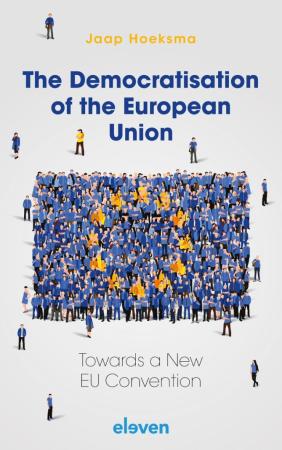The democratisation of the European Union symbolises the EU’s transformation from
a confederal association of states to a European democracy of states and citizens.
The EU is not a state but has established itself as a new kind of international polity,
which can be described from the internal perspective of the citizens as a ‘democratic
union of democratic states’, while it may be regarded from the UN-perspective of
global governance as a ‘democratic regional organisation’. In clear and simple terms:
the EU is a union of states and citizens, which works as a European democracy.
Guest blog by Jaap Hoeksma
The approval of the conditionality mechanism in 2022 may be regarded as the final confirmation that the EU has abandoned the traditional template in international relations. The hallmarks of the Westphalian system consist of absolute sovereignty and the legitimation of war as the ultimate resolution of conflicts between states. After two ruinous World Wars in the first half of the 20th century, however, the peoples of Europe wanted no more war. In order to achieve this goal, six exhausted countries agreed to sacrifice the principle of absolute sovereignty in exchange for the guarantee of peace. They shared the exercise of sovereignty over the materials required for the conduct of war and founded the European Community for Coal and Steel. As they disagreed about the nature of their new creation, they agreed to describe it as an organisation sui generis.
Magna Carta
After the broadening of their cooperation to the entire economy, the member states
identified their Communities in 1973 as a ‘Union of democratic States’. Pursuing the
dream of even closer union they wanted to give democratic legitimacy to their Union
too. Although the Westphalian template insisted that the concepts of associations of
states and democracy are incompatible, they were convinced that there is no point in
governing a union of democratic states in an undemocratic manner. Consequently,
they turned the European Parliament in a directly elected institution and organised
the first European elections in 1979. The introduction of EU citizenship in 1992 was a
further step in the direction of a system of dual democracy. The 1997 Treaty of
Amsterdam included democracy in the values of the Union, while the Charter of
Fundamental Rights, proclaimed in Nice in 2000, gave the newly created citizens
their own Magna Carta.
Constitutional backlash
These incremental steps away from the Westphalian paradigm culminated in the
2007 Lisbon Treaty, which construes the EU as a democracy without turning the
Union into a State. Seen in historical perspective, the Lisbon Treaty transformed the
EU from a mere union of democratic states into ‘a union of democratic states, which
also constitutes a democracy of its own’. ‘Lisbon’ marks the transition of the EU from
a confederal association of states to a transnational union of states and citizens.
Unfortunately, the EU institutions did not embrace their democratic identity, but
prolonged their agreement to disagree. As a consequence of their preoccupation with
the outdated paradigm they were unable to defend the EU against the allegations of
Brexiteers that the Union was undemocratic! While the UK left the EU, other
members wanted to force the Union from within to return to the Westphalian concept
of sovereignty. Hungary praised itself as an ‘illiberal democracy’ and was joined by
Poland in its populist opposition to the ‘dictates from Brussels’.
EU Identity
The two dissenting states raised their objections so vociferously that the October
2021 meeting of the European Council ended in sheer acrimony. It was merely
agreed to delay further debate until after the verdict of the EU Court of Justice on the
newly proposed rule of law procedure. In their complaints, the two emphasised the
Westphalian argument that the application of the conditionality mechanism resulted in
outright interference by Brussels in the internal affairs of a sovereign state. The ECJ
rejected this reasoning in unambiguous terms. The Court pointed out that the
member states have superseded the previous template by agreeing on a number of
common values, that they have applied these values to the EU and that the Union
must be able to defend these values. During the Council’s crucial December meeting
all member states approved the rule of law-measures proposed by the Commission,
thereby sealing the transformation of the EU from a confederal association of states
to a transnational democracy of states and citizens.
While the fact that the EU has established its identity should be welcomed by all
stakeholders, there is no reason for complacency whatsoever. The positive result is
that it improves the capability of politicians and scholars to diagnose the present
shortcomings. The EU institutions should start with burying the hatchet in the
protracted debate over the future of Europe and portray their Union no longer as an
association of states but instead as a European democracy of states and citizens.
Moreover, they should use the upcoming Convention for charting the practical
consequences of the conceptual transformation of the EU. In short, they should live
up to the ensuing expectations of the citizens in 2023!
